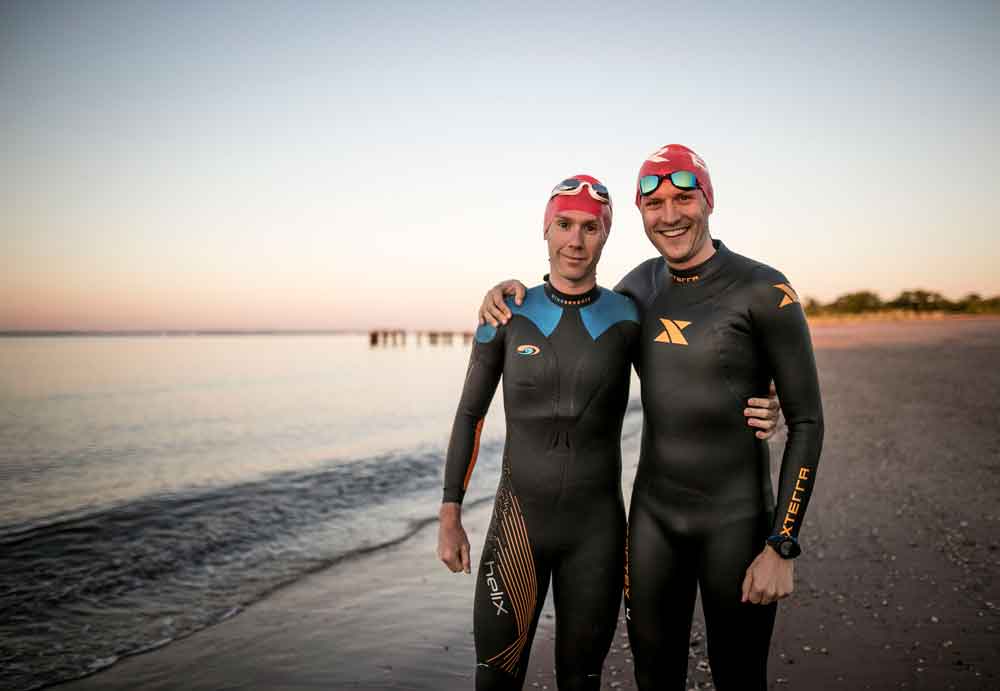5 Iron-Distance Races in 5 Days in 5 NYC Boroughs

Five iron-distance races. Five days. In the five boroughs of New York. Meet the athletes who made it happen.
Within minutes of each other, Chris Solarz and Chris Calimano jog up to our designated meeting spot in Central Park. They’ve suggested a running interview on the same loop they each ran nearly 28 times in one day this June during the Manhattan segment of Epic5 NYC; their independent effort to complete five iron-distance events in five days in the five boroughs of New York.
They came up with the idea, based on the Epic5 Hawaii event. They started talking about it with that race’s director, and “she was really supportive,” Solarz says. “She wants to map out possibly the next Epic5 race to open for the public, and we wanted to do a dry run.”
Solarz, 38, and Calimano, 36, met doing Ultraman Florida in 2016, and clearly, they’re no strangers to long, hard events: Solarz, an NYC-based pension fund consultant, did the signature Epic5 Hawaii in 2014 and also holds Guinness records including the greatest distance run in 12 hours on a treadmill (that’s 77.07 miles); Staten Island-based Calimano, an IT manager, has races like 4 Deserts (7 days, 250K, including the Sahara and Gobi deserts) under his belt. The key to ultraracing, they say is to “preserve yourself for the next leg and the next day,” as Solarz puts it. “I mean, if you saw what we were doing on the bike, it was not impressive—the whole thing is really low impact.
RELATED: 50 Iron-Distance Triathlons, 50 States, 50 Days
“I think the mistake people make is extrapolating from shorter races to the quintuple Ironman—they think that you’re going to feel five times worse. But it’s not the case, because your muscles aren’t working the same way, and you’re not working to exhaustion. I have this theory that every race gets 100 units of pain, and you just distribute it differently. Whatever the race is, you’re able to visualize and somehow perfect that race down to the last step.”
The logistics of racing in New York City were clearly tricky. “All the planning and documentation was part of the challenge,” Solarz says, and it sometimes seemed more daunting than the race itself. “You can’t close any of the roads, so you can’t have 700 unique miles. For safety, it’s helpful to have them be loops,” says Solarz, who, with Calimano, designed the courses—almost completely inside parks—and figured out all the permits and logistics. The smallest loop, a 0.98-mile ring in Queens, was the most mentally tough, Calimano says. So while the two of them didn’t stay together during the races, they were never far apart.
I ask them the question everyone asks: Why do it? Calimano offers up a gentle laugh and an apologetic look and says, “We probably should have prepared an answer for that. I guess to an odd degree it’s symbolic of life. You have your ups and downs. You don’t think you can take one more step forward but you have to. And you just keep believing in forward motion and just keep going. And before you know it, it’s over.”
RELATED: Danielle Grabol Becomes First Woman To Complete Epic 5
